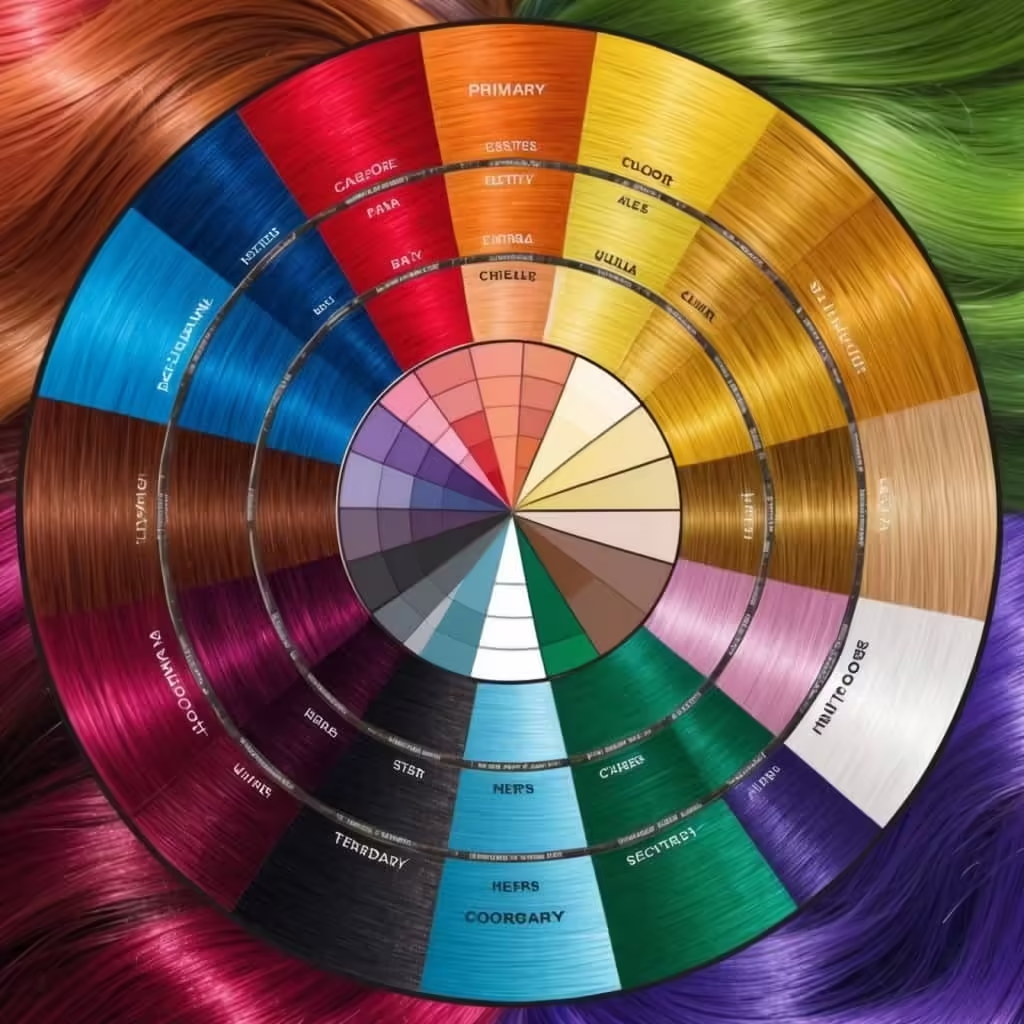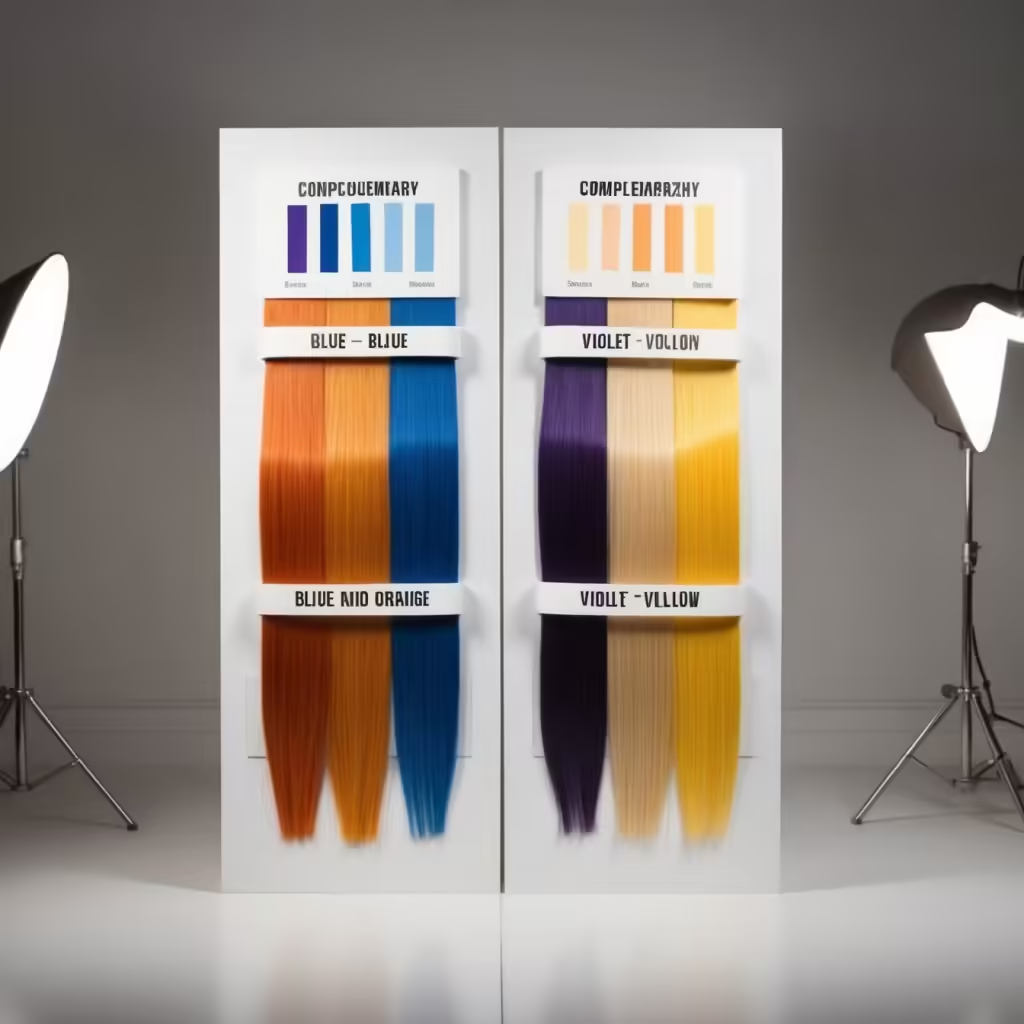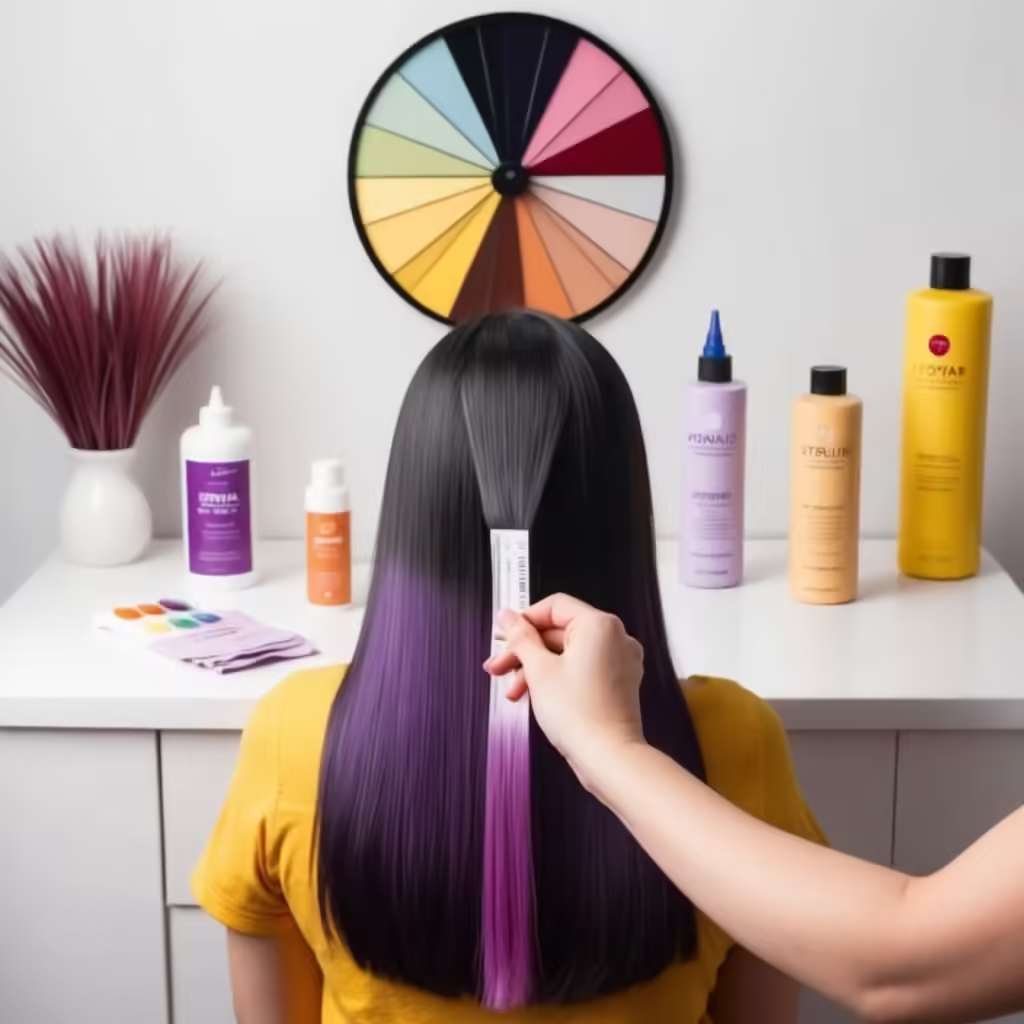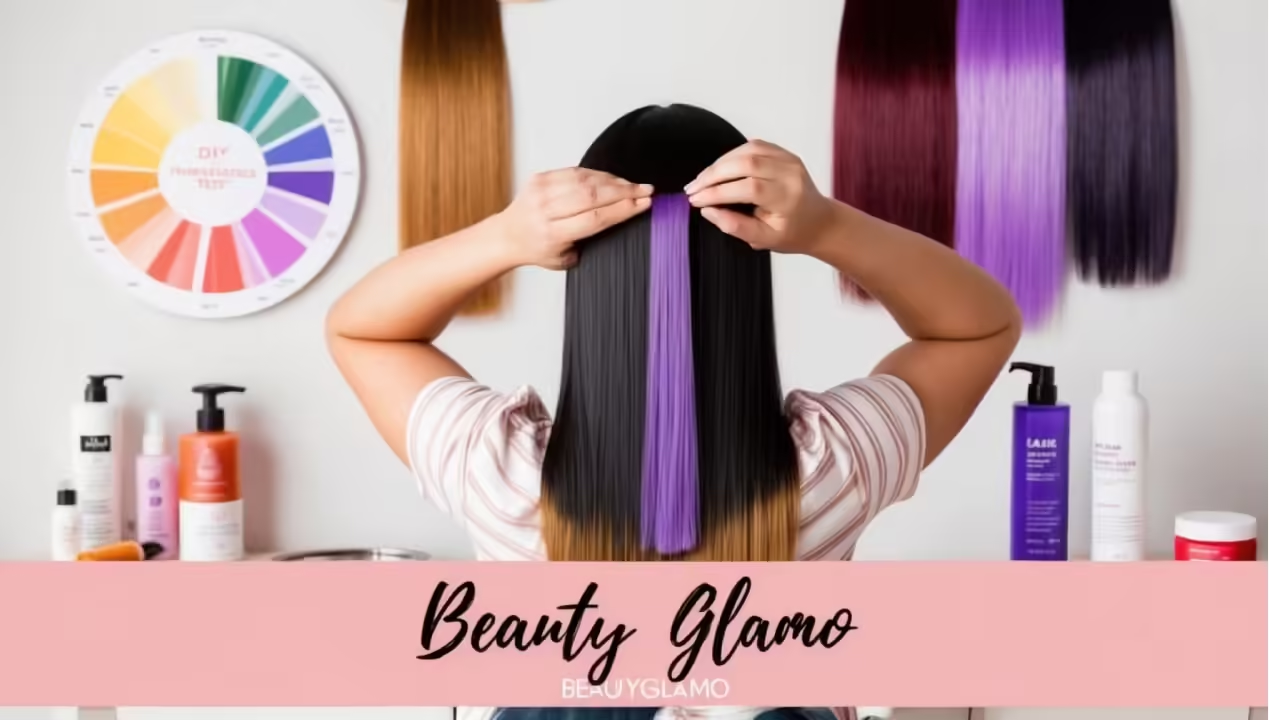Choosing the right hair color can indeed feel intimidating, especially if you’re venturing into DIY hair coloring or discussing options with your hairstylist. However, the secret to making bold or subtle changes lies in understanding the hair color wheel. Whether you’re aiming for a vibrant red or a cool ash blonde, knowing the science behind the hair color chart can significantly help you achieve the perfect look.
What Is the Hair Color Wheel?

The hair color wheel is a circular diagram that showcases colors placed in a specific order to visually represent their relationship. Furthermore, hair stylists use this tool to predict how colors will interact with each other. It’s especially crucial for neutralizing unwanted tones or enhancing the vibrancy of your chosen shade.
Why Is the Hair Color Wheel Important for Hair Coloring?
The hair color wheel is the foundation of successful hair coloring. Without it, selecting colors could easily lead to disastrous results such as brassy undertones or muddy hues. By understanding how colors complement or cancel each other out, you can make informed decisions, whether you’re darkening, lightening, or toning your hair.
Basics of Hair Coloring
Before diving into the wheel itself, let’s talk about hair coloring basics. When you dye your hair, you’re either depositing color or lifting (removing) pigment. The color wheel helps you manage these changes and keep your hair looking fresh and vibrant.
Primary Colors on the Hair Color Wheel
At the core of the hair color chart are the three primary colors: red, blue, and yellow. These colors cannot be created by mixing other colors and are the building blocks for all other shades.
Red
Red is a warm primary color that adds depth and intensity to hair colors. It plays a vital role in shades like auburn and burgundy.
Blue
Blue is a cool tone and is essential for creating darker, ashy hues. It balances out warmer tones like orange and red, giving your hair a cooler finish.
Yellow
Yellow is the lightest of the primary colors and works in combination with blue and red to create a wide variety of hair colors. It’s present in blonde shades and warmer tones.
Secondary Colors on the Hair Color Wheel
Secondary colors are created by mixing two primary colors together. In hair coloring, secondary colors are often used to adjust tones or neutralize unwanted hues.
Green
Green is made by mixing blue and yellow. It’s typically used to counteract red tones in the hair, especially when neutralizing overly warm shades.
Orange
Orange is the combination of red and yellow. It appears in warm brunette and auburn shades. If your hair has turned too blue or ashy, adding orange can help balance it out.
Violet
Violet is made by combining red and blue. It’s used frequently to cancel out yellow or brassy tones in blonde and light hair.
The hair color wheel builds on the fundamental concept of primary and secondary colors, as established by Isaac Newton and later adapted into color theory. Learn about Newton’s pioneering work on the color wheel and its application in modern color theory at MIT – Newton’s Color Wheel and Experiments.
Tertiary Colors and How They Work in Hair Coloring
Tertiary colors are created by mixing a primary and a secondary color. They include hues like red-orange, yellow-orange, and blue-green. These colors allow for more detailed customization of hair color tones.
Red-Orange, Yellow-Orange, Yellow-Green, Blue-Green, Blue-Violet, Red-Violet
These shades are often seen in hair dye kits to fine-tune the color, add vibrancy, or neutralize specific undertones. For example, if you’re aiming for a natural-looking strawberry blonde, you’d rely on red-orange tones to achieve the desired warmth.
Complementary Colors and Their Role in Hair Toning

Complementary colors are located directly opposite each other on the hair color wheel. When used together, they neutralize or “cancel out” each other. This principle is especially important in hair toning.
Using complementary colors is key in hair toning to balance out unwanted hues. The scientific exploration of color interactions dates back to early studies of light and pigments. Discover how the science of color theory has evolved over time with insights from the Smithsonian – The Science of Color.
Neutralizing Unwanted Hair Colors
For instance, if your hair turns brassy (orange tones), using a blue shampoo or toner can neutralize the unwanted shade. Similarly, violet helps tone down yellow in blonde hair.
The Role of Undertones in Hair Coloring
Undertones are the subtle hues underneath the primary color that give it warmth or coolness. Understanding your hair’s undertones is key to getting the color you want. Learn more about how hair porosity affects color absorption in our High Porosity Hair Care Guide. Understanding undertones in hair coloring involves deeper insights into color theory, which has its roots in historical and scientific studies. Explore the origins and deeper insights into color theory at University of Chicago – The Origins of Color.
Warm Undertones
Warm undertones include reds, oranges, and yellows. They often result in golden blonde, chestnut brown, or auburn hair colors.
Cool Undertones
Cool undertones consist of blues, greens, and violets. These are crucial when aiming for ash blonde, platinum, or cool brown shades.
Neutral Undertones
Neutral undertones lie somewhere between warm and cool, offering a balanced color without leaning too far to either side. They work well with neutral blondes, browns, and even black hair.
How to Choose the Right Hair Color Based on Skin Tone
Your skin tone plays a huge role in determining which hair color will look best on you. Here’s how to choose the right hair color based on your skin tone:
Fair Skin
Fair skin pairs well with cooler colors like ash blonde, platinum, and cool brown. Avoid overly warm tones that can create an unflattering contrast.
Medium Skin
Medium skin tones look great with warm shades like caramel, golden brown, and honey blonde. Neutral shades like chocolate brown also work well.
Dark Skin
Dark skin complements rich, deep hues like espresso brown, jet black, and warm auburn. Highlights in caramel or honey can also enhance your natural beauty.
Correcting Hair Color Mistakes Using the Hair Color Wheel
If you’ve ever colored your hair and ended up with brassy, orange, or muddy tones, the hair color wheel can come to your rescue. Using the wheel’s complementary colors, you can neutralize these mistakes and bring your hair back to the desired shade.
For a smooth transition to embracing your natural hair color, check out our Transition to Natural 3C Hair Guide.
The Hair Color Wheel for Balayage and Highlights
Balayage and highlights often require a blend of multiple shades. The hair color wheel helps stylists decide which colors work best together to achieve a seamless transition between highlights and lowlights.
DIY Hair Coloring Tips Using the Hair Color Wheel

If you’re considering coloring your hair at home, it’s essential to approach it with the right knowledge. Therefore, here are some quick tips to ensure a successful DIY hair coloring experience:
- Firstly, use the hair color chart to choose complementary colors that effectively neutralize unwanted tones.
- Additionally, always test a strand before applying dye all over your hair to avoid unexpected results.
- Moreover, invest in color-protecting shampoos and conditioners to maintain your hair’s vibrancy and prolong the color’s lifespan.
- Finally, invest in color-protecting shampoos and conditioners to maintain your hair’s vibrancy and protect your new color over time
For additional ways to keep your hair healthy post-coloring, check out our Ultimate Guide to Hair Oil for Nourished, Strong, Healthy Hair.
Conclusion
In conclusion, the hair color wheel is an invaluable tool for anyone aiming to achieve the perfect hair color, whether you’re a professional stylist or a DIY enthusiast. By understanding how colors interact and influence each other, you can effectively avoid common mistakes, tone your hair like a pro, and select shades that truly enhance your natural beauty. Ultimately, mastering the hair color wheel empowers you to make informed decisions and embrace the hair color you desire with confidence.
FAQs
- What is the hair color wheel used for?
>The hair color wheel serves as a valuable tool for stylists and individuals by helping them understand how colors interact with each other. This understanding makes it easier to select and tone hair colors effectively. - How can I use the hair color wheel to tone my hair?
By utilizing complementary colors from the hair color wheel, you can neutralize unwanted tones in your hair. For instance, violet cancels out yellow tones, while blue effectively neutralizes orange hues. - What are the primary colors on the hair color wheel?
The primary colors on the hair color wheel are red, blue, and yellow. These foundational colors are essential for creating a wide range of hair shades. - How do I choose the right hair color for my skin tone?
Choosing the right hair color depends significantly on your skin tone. For fair skin, it’s best to opt for cool tones. In contrast, medium skin tones look best with warm shades. Additionally, dark skin complements rich, deep hues like espresso and jet black. - What are complementary colors on the hair color wheel?
Complementary colors are those located directly opposite each other on the color wheel, such as blue and orange or violet and yellow. These pairs are used to balance and enhance hair colors effectively.

